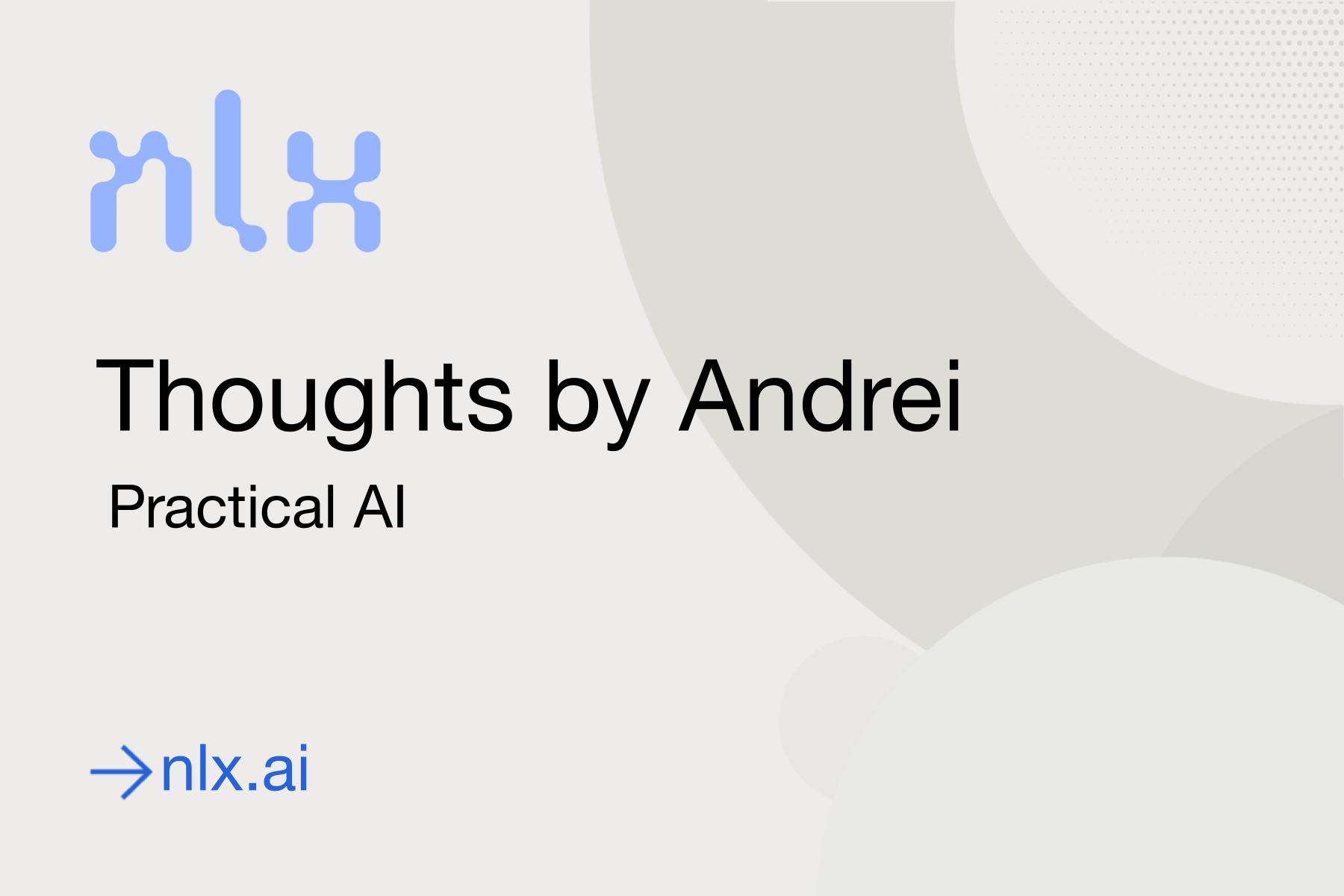
Practical AI
Too often there is a focus on the negative side of Artificial Intelligence (AI) - from its ability to automate scamming to the prejudices it inserts into an interview process, there’s still plenty to improve.
And aspirations of AI curing cancer, solving global warming, developing feelings, or taking over the world are all fascinating and make for great storylines. But they miss the mark on the subtle, yet important ways AI is already improving our lives today.
As a seasoned practitioner and university educator in AI with seven years of experience in Conversational AI specifically, I want to take a moment to spotlight the innovative and practical ways Conversational AI is being used, busting some AI myths along the way.
About Conversational AI
If you step back - the definition of Conversational AI is rather simple. The “conversational” part of the title refers to computers engaging in human-like conversations using AI. But those conversations don’t just happen the way they do between two people. In order to make the conversation with the computer work, Machine Learning (ML) and Natural Language Processing (NLP), two subcategories of AI, help the computer understand human language and improve the conversations over time.
While NLP technology is oftentimes powered by ML models, there are many other applications of ML other than NLP. Specifically, both ML and NLP can be used in a myriad of ways – think email filters, search, or enhanced health care – but where I’ve had the most experience with Conversational AI is in the customer service industry.
Hold times and staffing challenges continuously plague the customer support industry, resulting in diminished customer satisfaction, corroded brand loyalty, and ultimately, a hit to the bottom line. And the pandemic compounded these existing challenges in B2B, B2C, and B2E markets.
But many of the customer inquiries are redundant or fall into patterned groups… things like “password reset”, “managing flight”, “upgrade seat”, or “track order” aren’t very complex to solve, yet consume a lot of agent time that could be spent on more difficult inquiries. Per Infosecurity Magazine, “According to the Gartner Group, between 20% to 50% of all help desk calls are for password resets, whilst Forrester Research states that the average help desk labor cost for a single password reset is about $70.” This really adds up to become a significant business cost.
Using Conversational AI to automate simple customer inquiries can help answer the customer’s question more efficiently, while also taking the pressure off of call centers so that agents can focus on the more complex inquiries. Inquiries can be addressed via chat, voice, or multimodal (combines two or more modalities - such as voice, text, images, and video - into a single, richer interactive experience), which helps to accommodate the customers’ communication preferences or situation in which they are reaching out.
When Conversational AI technology is implemented effectively, customers can enjoy 24/7 automated customer service that empowers them to resolve their own inquiries at their own pace, wherever and whenever they want. Plus, Harvard Business Review, Forrester, and many other publications have long called out that many of your customers don’t want to talk to you, they want to self-serve!
On the other hand, Conversational AI offers businesses a scalable, cost-effective way to manage customer contact, acquire rich data from the inquiries to make improvements, notice increased customer satisfaction, and experience less stress on call centers, all adding up to an increase in the bottom line.
That said, not everything can or should be automated. There are inquiries where customers should be sent to a representative right away to have the best experience. Trying to automate what only a human should handle is a big mistake that leads to distrust and dislike of Conversational AI technology.
For example, according to Conversocial, 62 percent of customers felt humans were more polite than chatbots. And in a 2019 CGS study, 68 percent of consumers would not trust their personal information with a chatbot.
These studies tell us that an increasing majority of customers prefer to self-serve, but they want helpful, kind, trustworthy self-service experiences.
Conversational AI myths, busted!
So, with that said, let’s address some of the common Conversational AI myths! There are a lot, but here are the five I hear most often.
Myth: Companies use chatbots and IVR because they don't want to talk to customers.
Fact: Companies use Conversational AI technology because they want to offer customers better "right now" service and engagement, reducing hold times and assisting with staffing shortages the company may be experiencing. Rather than have their customers wait on hold or until the next business day when the call center opens, they want to offer customers more options to resolve their inquiries right now.
Myth: All chatbots are dumb.
Fact: Chatbots can be extremely smart, depending on how conversation flow content is designed and how much training the bot has had! (go deeper...) Good writing is central to Conversational AI. It’s all about the content a brand creates, and how much branding work goes into creating the experience!
Myth: Conversational AI doesn’t help with customer retention.
Fact: It’s no secret that creating repeat customers is five times more cost-effective than acquiring new ones. This makes taking as many steps as possible to retain existing customers essential for any business. Thankfully, Conversational AI technology offers incredible tools for improving customer experiences across the board, and can even assist with customer acquisition.
Myth: Conversational AI is expensive!
Fact: It doesn’t have to be! Because there are so many companies out there, offering a variety of business plans that are sure to meet your needs and price point. (But of course, I’ll recommend companies that offer a pay-as-you-go business model with no hidden fees or service charges. 😉)
Myth: Integrating company processes and systems is expensive and very time-consuming.
Fact: It doesn’t have to be. Companies today are innovating to make channel, system, and business-specific integrations super easy - reducing the need for companies to hire giant teams or third parties to spend months hooking things up or rebuilding. (More on what that looks like at NLX here.)
Conclusion:
Myths aside, the reality is that Conversational AI has come a long way since the first chatbot, ELIZA, launched in the 1960s. I believe it’s only going to keep getting better and better – both for the customers and for the business – thanks to the practical ways we’re communicating with computers.
The future of Conversational AI is being innovated every day, and I can’t wait to see how it changes in the next few months, years, and decades.
